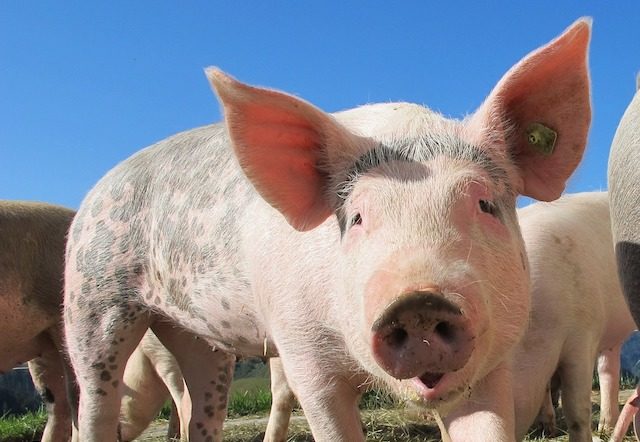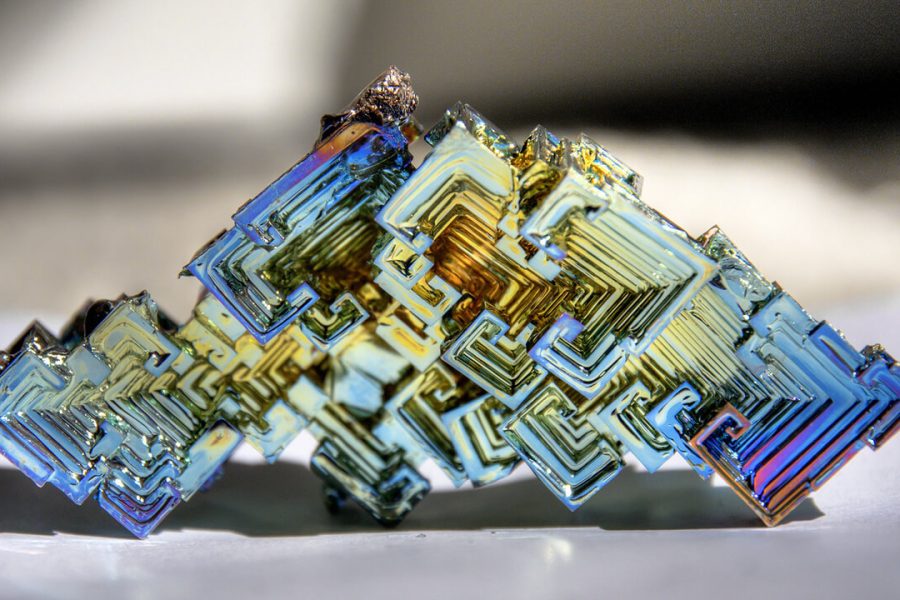The most inevitable part of life is death. Despite this, science is getting closer and closer to ways to reverse death or just ignore it completely. It's not like we're actually making zombies or resurrecting anyone, but you never know what the future holds.
10. Dead pigs have restored organ function

In early August 2023, it was reported that researchers had restored blood flow and cellular activity to the hearts and brains of pigs that had been dead for an hour. The researchers were quick to point out that this information was not clinically significant, and it wasn’t like the dead pig had gotten up and started running or anything. But it did have some significance in terms of what we think happens when something dies.
The idea of death brings finality. We’ve long believed that cardiac death is the final stop for a living thing. You can’t change that. Or you couldn’t until August 2023, when these scientists did just that. That means the body retains the potential for life long after what we’ve traditionally thought of as irreversible death.
The future may not be about finding people who have been dead for an hour and bringing them back to life, or maybe it is. But there is also the potential for organ treatment and preservation, ensuring that life-saving organ transplants can be performed in greater numbers.
The study showed us that cells don’t have to die right away. The damage can actually be reversed, and function can be restored. And we’ll soon see what that means for an organ like the brain.
9. Brain Resurrection Experiment in India Blocked by Government

On a superficial level, the idea of reversing death can seem either really cool or really creepy. It’s often filtered through our understanding through the lens of pop culture. Superhero cool, zombie creepy. But scientifically, it presents a staggering number of serious ethical issues that may be impossible to resolve. If you could bring a dead body back to life, would you have the right to do so? Should you?
These and other questions likely prompted the Indian government to put an end to experiments that were being conducted in the hopes of resurrecting the dead using stem cells, protein shakes and lasers, because why not?
The study, conducted by BioQuark, was planned for 2016 in Rudrapur, but regulators said it hadn’t received approval, so nothing happened. The plan was to use stem cells, electrical stimulation and proteins from brain-dead people to try to stimulate the growth of new neurons and restart the brain. It was literally an attempt to resurrect the dead. But it never got off the ground.
It is worth noting that many prominent scientists in the field spoke out against the experiments when they heard about them, calling them quackery and saying they had no scientific basis. At best, it looked like a cruel experiment to give false hope to the living.
8. Russian scientists have resurrected a 30,000-year-old plant

Of course, not everything science brings back from the dead has to be human. Russian scientists are at the forefront of this kind of research, as evidenced by the fact that they have resurrected 30,000-year-old fruits.
Thanks to Russia's climate, Siberian permafrost does a great job of preserving things in the frozen ground. So 30,000 years ago, some squirrel or other creature buried the fruit Silene stenophylla in the hope that it would come back and eat them later, I suppose. It never did, and for 30,000 years the fruit remained frozen in the ground until it was dug up in modern times by explorers hunting for mammoth bones.
Scientists at the Institute of Cell Biophysics tried to plant the seeds, but were unsuccessful. However, after harvesting cells from the fruit, they were able to grow them in lab dishes and thus create new plants. It is believed that natural sugars in the plant helped keep the cells frozen all these years.
The plants they grew were similar to modern versions but not identical, with noticeable differences in things like petal shape.
7. The cryonics industry still preserves bodies

Most of us have heard of cryogenics by now, even if it is only used in science fiction or as a joke, or both in the case of shows like "Futurama" , we at least understand the concept. A person is frozen at or near the moment of death in the hope that medical science will advance enough in the future to bring them back and cure whatever caused their death in the first place.
Cryonics is a real thing, at least the freezing part of it, and there are companies out there right now that will freeze and preserve you for the future. One company in China boasts a list of 10 frozen clients so far in 2020, and many more are planning to join their ranks when the time comes.
During the Covid-19 pandemic, patients who died from Covid were preserved in cryonics facilities in the hope that the condition could be cured at some point in the future. However, the nature of the disease has made preserving bodies difficult, and the journey of at least one patient sounds like the beginning of a horror movie.
The man's body was kept on dry ice for 24 hours before he was taken to a facility where staff were unable to preserve him due to the contagious nature of the disease. So they wanted to use medical-grade antifreeze on just his head and brain while the rest of his body was simply frozen in liquid nitrogen, a process that caused the ice crystals to tear his cells apart. Unfortunately, too much time had passed for even that to work.
The former president of the company that did the freezing said they could probably repair that damage in the future, too. He also noted that the brain might be fine because it was removed and stored separately.
6. Head transplant

Since 2015, neurosurgeon Sergio Canavero has been promising to perform the world's first head transplant. He claimed it would happen in 2017, and the procedure was performed using cadavers, which leaves much to be desired in terms of confirming a successful outcome. Canavero is said to have worked for a time on a Russian patient who suffered from a debilitating disease that rendered his body useless, but it seems to have come to nothing.
In 2022, a head transplant has still not been performed, despite Canavero insisting he had overcome one of the major hurdles, namely how to connect the two spinal cords together, back in 2016.
5. A company called Nectome wanted to create a backup copy of the human brain.

Not all afterlife has to be biological. The human brain is often compared to a computer, so it stands to reason that someone would consider transferring their mind to a computer so they could be a ghost in the machine.
A company called Nectome promised to back up your mind for future restoration, and even got their hands on a real human brain to try out the process. They've since dropped many of their claims, taking a turn at their business model. They've switched to saying they want to learn how to do it, not that they can actually do it, though a few people have apparently paid for the service anyway.
The science behind what they were doing was so shaky that MIT had to publicly distance itself from the company because the founder was one of their alumni, and the professor was receiving money from a grant won by the company, and they didn't want to be blamed for legitimizing the work.
4. Microscopic creature comes back to life after 24,000 years

We've already seen the Russians resurrect a 30,000-year-old plant. But maybe you're not impressed. It's just a plant. Big deal, right? How about a 24,000-year-old life form? They did that too. The bdelloid rotifer is a microscopic organism that is thought to be able to survive frozen for about a decade. That's impressive, but hardly anything compared to the truth.
Found in the frozen Alayeza River in Russia, scientists not only thawed it out, they made it reproduce. The discovery was significant because, despite being microscopic, it is a multicellular organism. If it can survive frozen for 24,000 years, perhaps other, more complex organisms can too.
3. Pittsburgh scientists resurrect dogs after three hours of death

There's no better way to grab attention with a headline than to add the word "zombie," and that's what most media outlets did with the story of dogs being brought back from the dead in Pittsburgh back in 2005.
If you're a dog lover, you won't like this story, but that's exactly what the researchers did. They washed all the blood out of living dogs, replacing it with a cool saline solution mixed with oxygen and glucose. Their hearts stopped, as did their brain activity, and the dogs were clinically dead. Three hours later, they reversed the process, returning the dogs' blood and then shocking them back to life.
Reports said a small number of dogs suffered permanent damage, but the rest were fine. It was hoped that the experiment could one day be tested on humans, with the aim of using the process to save victims of severe blood loss.
2. Restoration of metabolic function in the pig brain

Let's go back for a moment to where we started, with pigs coming back to life. The same team that was able to restore cell and organ function made another breakthrough a couple of years ago that caused a media frenzy and sensational headlines about zombie pigs.
In 2019, Nenad Sestan of the Yale University School of Medicine and a team of other scientists experimented with pig brains harvested from a slaughterhouse. Using a machine of their own making, after much trial and error, they were able to preserve the full functionality of a dead pig’s brain, keeping the vital fluids flowing through it at the correct temperature and pressure that it would experience if the pig were still alive. They found that even outside the actual pig, they could keep the cells alive. In fact, some cellular functions were restored.
Sestan took steps to prevent the neurons from firing again, fearing that their experiment might actually lead to some kind of consciousness. But during one test, they measured very little electrical activity, leading them to worry that they might have actually brought the brain back to life hours after the animal died, which is literally an existential nightmare.
Although they seem confident that no real thoughts or consciousness were restored, they have proven that brain death is not a single event but a process, and with proper treatment it can be prevented or reversed.
1. The ReAnima project attempted to regenerate heart tissue using genetic manipulation.

Remember that Indian experiment that was supposed to try to stop brain death before the government shut it down? It was part of something called the ReAnima Project, and it wasn't their only foray into the world of non-death.
Funded by an €8 million grant from the European Union, ReAnima has expanded its research in an attempt to reverse death. In India, they focused on stem cells, but studies have shown that stem cells have not been successful in regenerating human heart tissue. This means that if a heart attack damages or destroys your heart, stem cell treatment shows no sign of being able to heal it. But this is a human heart.
There are animals in the world that have remarkable regenerative abilities. Certain species of fish and amphibians can regenerate damaged heart tissue. ReAnima is studying the nature of these regenerative abilities in the hopes of one day bridging the gap between these animals and humans. The process of how they will do this seems unclear, but their website certainly sounds confident when they describe achieving these goals through things like genetic manipulation.














Оставить Комментарий